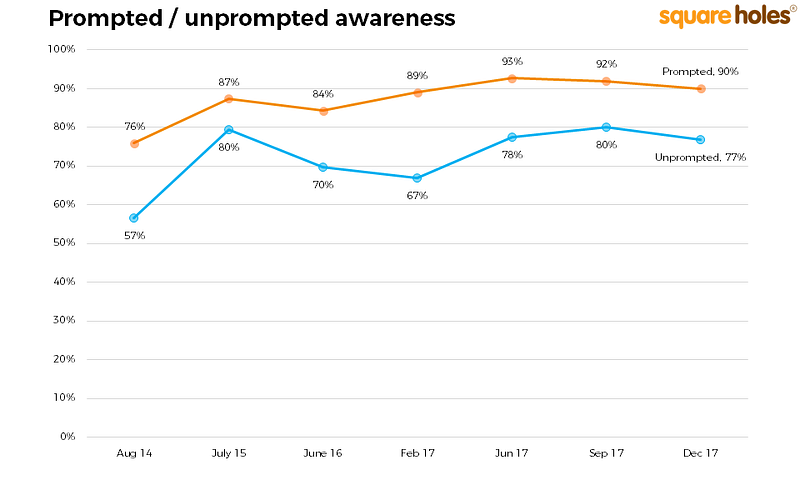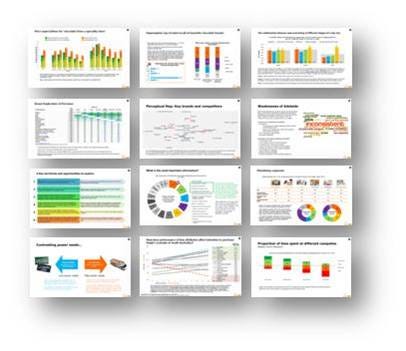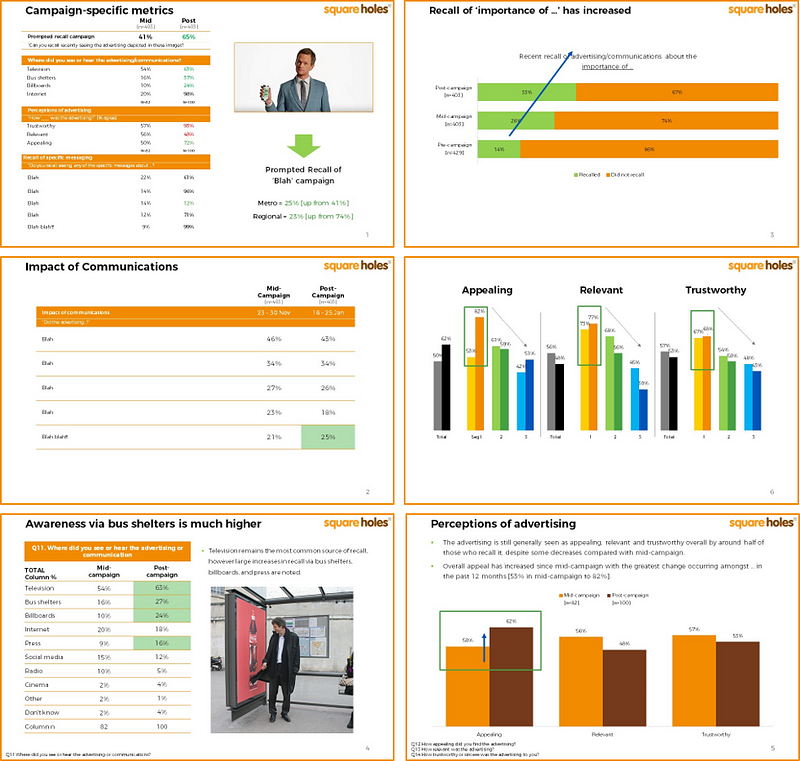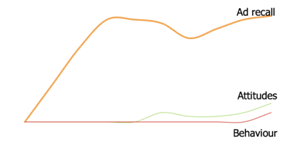How to measure marketing effectiveness
The best way to measure marketing effectiveness is to assess the corresponding change. Be this change through increasing sales to movement in attitudes and behaviours. There is an ever expanding canvas allowing for new marketing channels. With this, there can be complexity in understanding which aspects of the strategy are having the required impacts and which are not.
“Half the money I spend on advertising is wasted; the trouble is I don’t know which half.” John Wanamaker July 11, 1838 — December 12, 1922
The quote by the long dead Wanamaker likely makes marketing professionals cringe, yet many argue that the quote actually over exaggerates how much marketing is effective. Clearly not all marketers are equal, and some are far more competent than others. Yet, with a projected $558 Billion to be spent on advertising globally in 2018 (traditional and digital — More via Statistica), that’s a huge amount of potential waste.
To maximise effectiveness, a solid strategy and implementation is critical. Equally as important is the ability to measure the effectiveness in the short, medium and longer term, and where refinements are worthwhile. While short term measures such as impressions, clicks, website visits of inquiries or immediate sales are easily monitored. Measuring movements in metrics critical to medium to long term success such as brand growth and attitude change are far more hidden and difficult to measure without robust surveys.
Survey monitoring of campaign impact pre, mid and post-campaign (and ideally on-going) remain standard for strategic marketers. They allow for an understanding of overall population and/or market changes to be measured and tracked over time. Is the overall marketing strategy having a sustained impact, or it it just short term to a limited audience of the total population? Which media is working and which is not?
Below are key considerations in surveys to monitor marketing effectiveness…
1: Define the key performance indicators and data feeds.
Clear definition of measures upon which ‘success’ or otherwise can be measured in the short, medium and longer term is important. This likely starts with non-survey measures such as impressions, clicks, website visits of inquiries or immediate sales, and importantly setting up easy and ideally systematic ways to access this data. Google analytics provides a great dashboard for website statistics, as do the advertising portals for Facebook, LinkedIn et cetera, and the sales team is sure to be able to provide lead and conversion data. Also, valuable if media spend data, including media mix, campaign schedule and budget. Monitoring campaign movements pre, mid and post-campaign (or even better over time) against a variety of measures is critical in understanding what has more and less impact.
Further to this, valuable survey based measures to capture data on and measure over time include the following: Word-of-mouth on the topic / category; where seen or heard; Category spontaneous brand awareness; Ad / marketing recall unprompted and prompted; Recall of specific advertising / marketing; Message take-out; Where seen or heard; Campaign relevance, believably and appeal; Impact on attitudes / behaviour; propensity to change behaviour / switch / purchase.
Setting up a solid set of indicators as benchmarks, and being able to keep these constant over time, even avoiding small adjustments, is vital to measuring effectiveness.

2: Survey methodology design is representative and replicable.
Designing the survey to allow for the corresponding responses are a statistically valid sample of the actual target market or population is critical, and importantly that the same sampling approach can be used at key points in measuring the campaigns (e.g. pre-campaign, mid-campaign and post-campaign, or on-going) to access different respondents, not already surveyed in the campaign monitor, yet are statistically identical to previous samples (e.g. age, gender and other demographics).
Applying an appropriate survey sampling methodology is critical to ensure that the subset of the population is representative of the actual population. Ideally this is a probability sample “in which every unit in the population has an equal chance of being selected in the sample, and this probability can be accurately determined,” although a non-probability sample may be required, yet still providing a solid representation of people in the market, not skewed to those more likely to be exposed to the marketing or a particular narrow segment for example.

Optimally, the methodology allows for inferences to be made such as “prior to the campaign, only X% of the total market had seen or heard any advertising or promotion about … on <media>, and Y% were aware of brand …., yet in the post-campaign survey the levels increased to X+% and Y+%,” just like the random target market.
Selecting the optimal survey methodology is also important. In recent years marketing effectiveness surveys are increasingly conducted online, allowing prompting with campaign imagery et cetera, using large representative online research consumer panels. However, telephone and hybrid surveys (i.e. combining multiple approaches such as telephone and online) are also common to allow for a wider cross-section of the population to be captured, and the ability to compare, contrast and combine different samples.
3: Explore the data measuring movements and lessons over time.
The priority in monitoring marketing effectiveness is corresponding movements in behaviours and attitudes that impact short, medium and longer term objectives.
Critical measures such as the level of marketing recall, overall and via different media, message take-out and changes in word-of-mouth, brand visibility, differentiation, attitudes and propensity to change behaviour / purchase / switch et cetera are worth monitoring pre, mid and post-campaign (or on-going).
Analysis allows for assessment of which media have the larger and weaker impact on effectiveness. This can be via tracking the media mix over time and identifying when shifts in key short, medium and longer term measures are greater.

Further to this, analysis such as regression analysis can identify which media is having the greatest impact (e.g. those who recall television advertising were more able to recall the message and have stronger unprompted brand awareness). Monitoring of marketing effectiveness can also be analysed and charted against other measures such as website visits, sales and other key performance indicators to allow for easy observation of movements over the campaign period.
Further to this, surveys to monitor marketing effectiveness can also provide critical analysis of which segments of the total target market are being more and less impacted, and which executions are having greater and weaker resonance. Collecting robust data from representative and replicable surveys and other data sources is fundamental to optimising marketing effectiveness.
And, most importantly, this is not about success vs failure, but lessons moving forward as to what has the greatest short, medium and longer term impact on strategic objectives. The role of mid-campaign surveys and other measures is especially vital for campaign media and if possible creative refinement to maximise overall impact.
…
Marketing effectiveness has always and will always be difficult to measure, particularly when the strategy is to shift short, medium and longer term attitudes and sustained behaviours. It is somewhat simple to shift short term sales, website visits, inquiries and other tangible measures with sales promotions and lead generation campaigns. However, to create medium to longer term sustained change in brand, business growth and attitudes changes is far more complex and difficult to measure.
Digital media does provide the ability to measure impressions, click through and conversation. And, sales and inquiries are generally easily monitored. Placing the creation of a robust dashboard monitoring campaigns, including surveys, is valuable in continuously optimising marketing effectiveness. Robust and replicable surveys of the target market provide critical trend measures of otherwise invisible medium to longer term factors such as brand awareness, image and differentiation and propensity (to buy, switch, change etc). Most importantly such monitoring of marketing effectiveness is vital to ever evolving and building brands, influencing positive behaviours and driving growth and achieving strategic targets.





